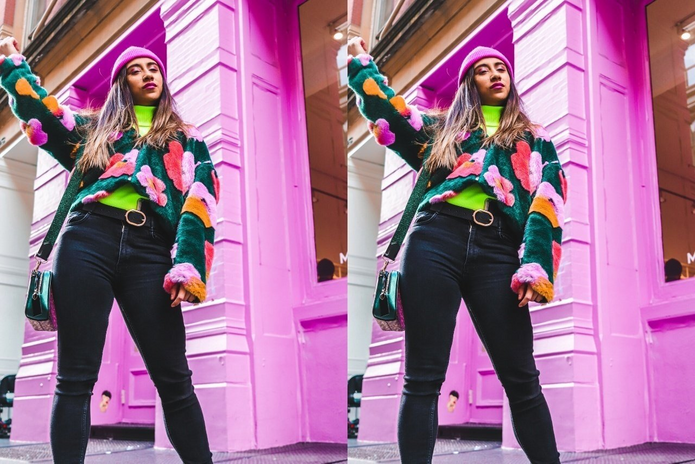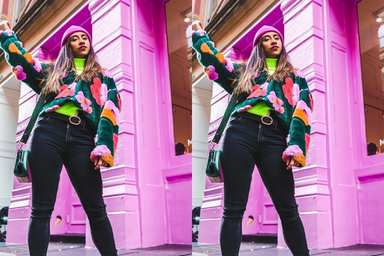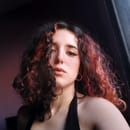Art and fashion have always gone hand in hand. One language has always completed the other. Always moving together. Both are expressions of which both the artist and the stylist convey their desires. The artistic universe often follows as inspiration for collections, causing a deeper interpretation.
Here we go then, some of the various moments when the inseparable were together.
- Pop art
-
Pop Art emerged between the 1950s and 1960s, stemming from a movement based on the mass consumption of capitalist molds. Using intense and vibrant colors, it showed images of consumer elements on the rise, reproducing everyday objects.Since its emergence, the movement has always followed fashion by bringing compositions closer to what new generations represented.
The opposite was done too. Saint Laurent was the first designer to break the trend, when he launched the Mondrian dress, in his collection entitled “Pop Art” in 1966’s Fall/Winter season.
There is also Gianni Versace’s engraving of Marilyn in the designs of the brand’s dresses, which had a comeback in more recent times. This shows that big names in fashion used the movement combined with their compositions.
- Expressionism
-
Expressionism is based on the author’s feelings. These are traits with a highly emotional charge, giving priority to bringing a greater subjectivity to what is shown.
Great artists, like Van Gogh, embarked on this movement. And of course, many designers used it as a base. Based on that, Isabela Capeto, a famous Brazilian stylist, launched a collection at SPFW 2010 totally based on expressionism.
The street wear also brings great influences of expressionist designs. An example is Vans, which signed a sneaker collection entirely focused on Van Gogh’s arts.
- Surrealism
-
One of the most different and complex movements. Where the sense is not to make sense. The pieces present a combination of figures and subjective poetry. Embarking on this, great brands are based on the context for the creation of their pieces.
The American Open Ceremony was one example of brands that closed the deal with the movement, adding a unique characteristic within its pieces in the collection “Opening Ceremony and Magritte”. René Magritte was one of the main surrealist artists, known for pieces like “Shéhérazade”, “The Lovers“, “The Blow to the Heart” and “Hegel’s Holiday”, that stamped the clothes.
- Fauvism
-
The French movement was initiated in 1905 by artists who opposed following the rules of impressionist aesthetics, popular at the time. Fauvism had a light theme, based on the joy of life and emotions, and had no critical or political foundations.
The Louis Vuitton Spring/Summer 2011 fashion show was inspired by Paul Poiret and the style of colors and aesthetics of Fauvism. Based on the designer’s pieces, the collection shows warm colors that mark the movement.
- Futurism
-
Futurism appeared in the 60s. It followed a theme inspired on speed, on the technology that was emerging. Its palette of colors was based in metallic and shiny colors.
In 2017’s Winter fashion shows, the movement was present. Even high fashion made use of it, bringing a modern collections with this futuristic vision. The iconic Chanel was one of the brands that honored this strand of art.
——————————————————————–
The article above was edited by Gabriela Girardi.
Liked this type of content? Check Her Campus Cásper Líbero Home Page for more!



